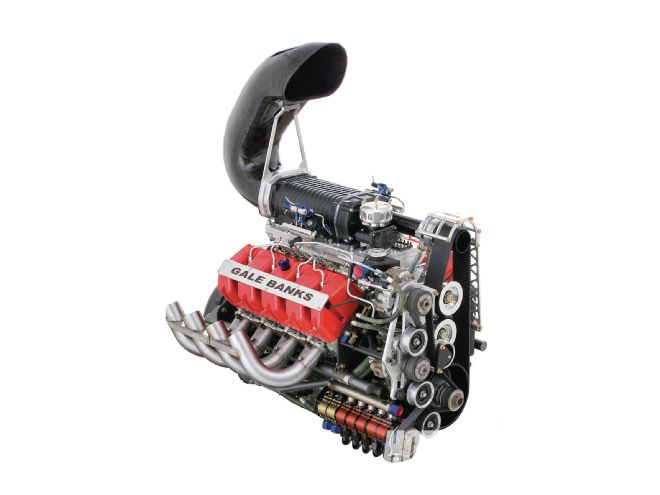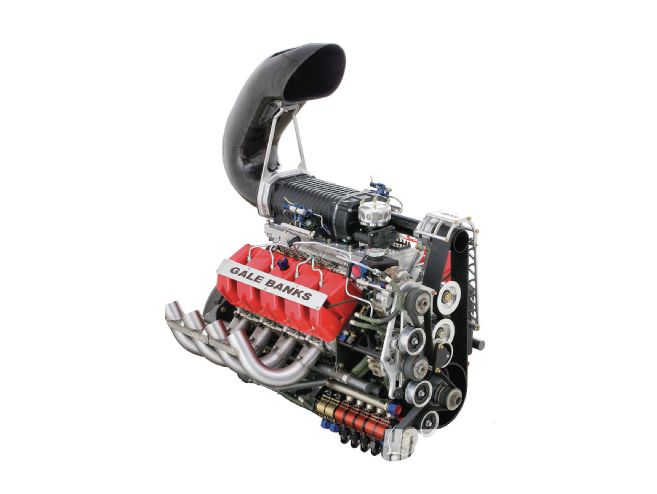
Diesels aren't just for pulling tree stumps anymore. Pioneers like Gale Banks Engineering's refined blown diesels pound out more than 1,000 hp and 1,000 lb-ft in competition trim. Banks currently holds the FIA worlds fastest diesel two-way land-speed record (217 mph) and has a 405ci Pro Stock diesel truck that holds the NHRD (National Hot Rod Diesel Association) quarter-mile record (7.77 seconds at 180 mph).
 Banks’ next effort: a 1,500hp/1,500-lb-ft 7.1L Duramax-powered Top Dragster with a 4.0L screw blower overdriven 3:1 atop a billet intake feeding CNC heads. The seven-stage dry sump and a piston cooling system keep it alive. The cam is a Banks hydraulic roller (0.500/0.541 lift, 221/228 degrees at 0.050, 116.5 LSA). Expect 6-second e.t.’s at 200-plus mph.
Banks’ next effort: a 1,500hp/1,500-lb-ft 7.1L Duramax-powered Top Dragster with a 4.0L screw blower overdriven 3:1 atop a billet intake feeding CNC heads. The seven-stage dry sump and a piston cooling system keep it alive. The cam is a Banks hydraulic roller (0.500/0.541 lift, 221/228 degrees at 0.050, 116.5 LSA). Expect 6-second e.t.’s at 200-plus mph.
Running on No. 2 diesel fuel, high-end diesel motors make more torque and power at a lower rpm than equivalent spark-ignition engines. The Pro Stock truck's 405ci, four-valve Duramaxs 1,180 hp peaks at only 5,200 rpm, with 1,200 lb-ft on tap by 2,200 rpm. Would you believe 1.11-second 60-foot times?
The secret to making this work: extremely high fuel pressures and electronically controlled direct-injection systems. The engines use common-rail fuel injection similar to a gas engine that, with a Banks-designed computer, fires the injectors up to five times per induction pulse. Explains Banks, "This lets you put the fuel where you want, time it the way you want, yielding wonderful atomization. The piston shape and injector angle are critical for achieving results, too," as are 4555-psi of boost and 30,000-psi injection pressures. "That's much higher than the old-school, 3,0004,000-psi, mechanically injected diesels used to run." Banks engines have at least 16:1 compression, but (at the risk of blowing the heads off the block) some guys run 1213:1 and up to 250300 psi of boost.
Cams are different than typical spark-ignition racing cams. Overlap is almost nonexistent to avoid blowing air right out the exhaust side. "You must close the intake valve pretty early so the air is hot enough to autoignite the fuel when you inject," Gale explains. Other diesel tech is similar to high-end gasoline engines: heavily ported heads, good turbos or superchargers, and efficient intercooling.